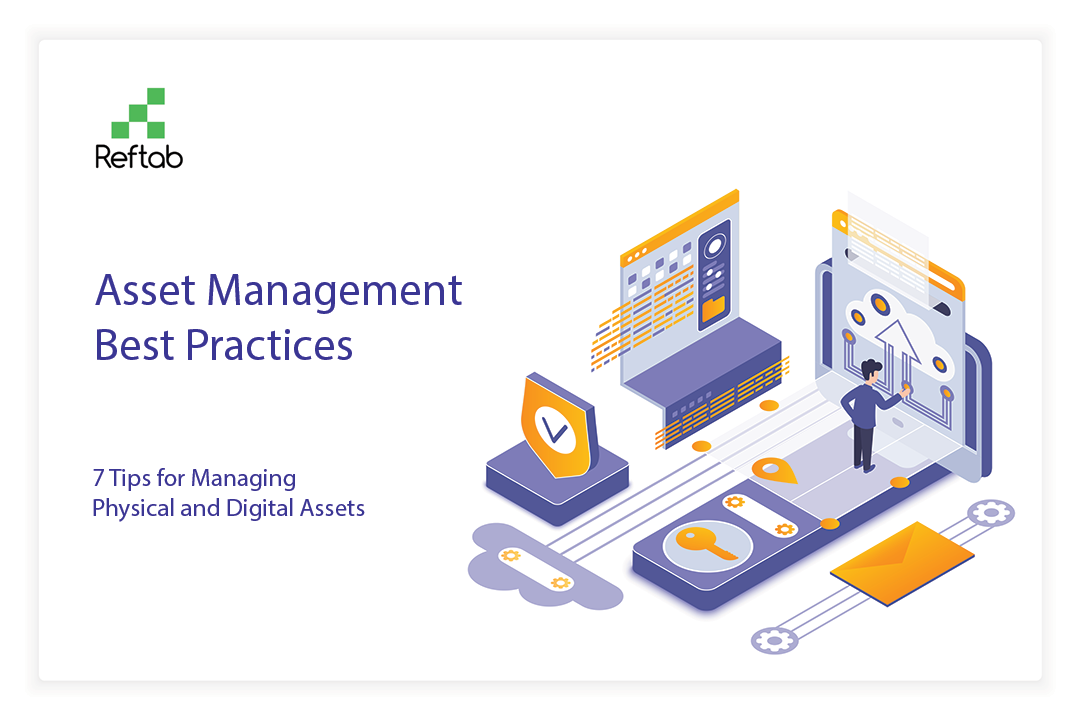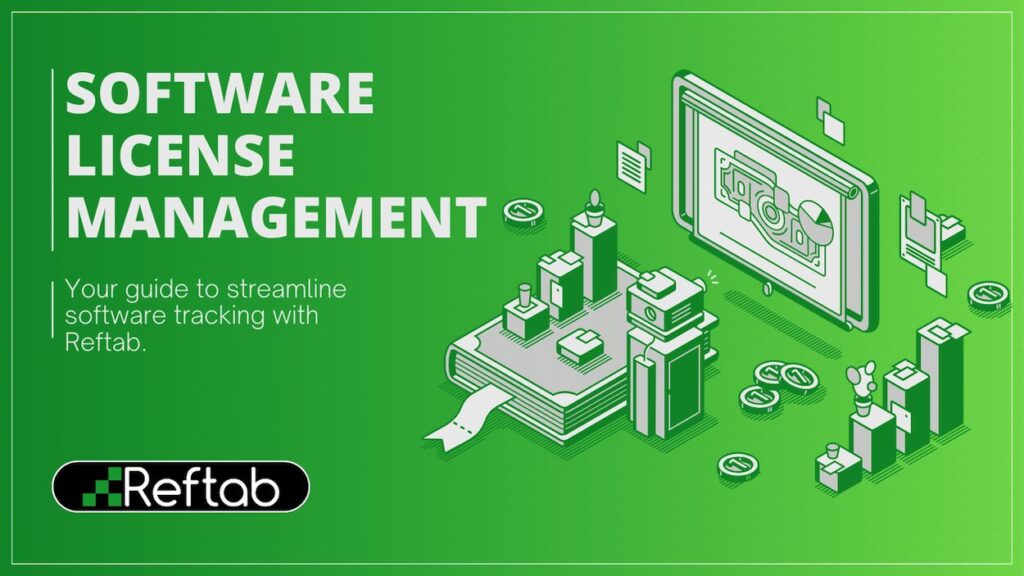Software Asset Management Best Practices: 7 Tips for Managing Physical and Digital Assets
Table of contents

Where does your company’s software asset management system stand?
Software asset management (SAM) is the process of managing the end-to-end process from communicating with software vendors, purchasing software licenses and deployment to software maintenance, mitigating compliance risks, and keeping track of current contracts, renewal dates and total software costs (like used and unused licenses). This usually sits within the IT department, and has become an increasingly important role especially with the explosion of software-as-a-service (SaaS) tools and more teams switching to be either hybrid or fully remote.
From large warehouse product inventory management to hundreds of SaaS subscriptions, the maintenance of company financial spreadsheets, mismanaged assets can result in operational slowdowns, unnecessary costs (from duplicate or unused software), security risks, and outright disasters.
With 55% of IT professionals witnessing an increase in cyber attacks in recent months, particularly the unauthorized removal or transfer of data (phishing emails, transfer of company data from devices, etc), now is the time to securely manage digital and physical assets alike.
In this post, we’re sharing seven software asset management best practices to minimize future risk and to best manage physical and digital assets.
- 1. Audit your assets
- 2. Start off simple
- 3. Establish SOPs for consistent processes
- 4. Incorporate the use of asset management software
- 5. Appoint a full-time or part-time asset management admin
- 6. Maintain proper security efforts
- 7. Develop a disaster recovery plan
1. Audit your assets
When discussing effective physical and digital asset management tactics, conducting an asset audit is essential for understanding what you have and how it’s used. More often than not, assets reside in poorly managed locations—from underutilized company servers to backroom storage bins. These items are unaccounted for as a result, causing inaccuracies in data and potential security concerns.
Start by taking a deep dive into your asset locations and record exact quantities of what you have, where it’s located, and how it’s organized. Be sure to also record exactly who has access to these assets and if these individuals were aware of their presence. This process will allow you to understand how assets are currently managed, who’s using them, and identify gaps in their organization.

2. Start off simple
When it comes to both physical and digital asset management, it’s very easy for a company’s processes to become a bit scattered (and overwhelming). When an asset management process becomes too convoluted for administrators to handle, it ultimately becomes significantly easier for error and security threats to arise. So, don’t jump straight into a 12-step management process.
Instead, when creating your asset management strategy, begin by creating workflows for various basic recording processes, like asset approval and archiving. For example, has the asset been approved for use? And, after use, has the asset been properly archived or not?
Simplify these processes and only share access with those who are distinctly responsible for managing them. As you become more familiar with the management process, you can circle back to revise workflows and allow for automation.
3. Establish SOPs for consistent processes
A standard operating procedure, or SOP for short, is a set of written instructions that outlines the step-by-step method for properly completing a shared activity. In terms of managing physical and digital assets, an SOP breaks down the complete details for how to best navigate this process. These SOPs are then distributed among appropriate employees to ensure a consistent approach across all departments.
Depending on your business, you might have two separate SOPs for managing either physical or digital assets. For instance, an eCommerce brand might have a particular SOP for organizing and tracking physical stock and another for managing all promotional images. When developing an SOP for your business, start by identifying a uniform naming strategy for all assets.
Digitally, modify original assets so they follow a synchronized naming structure and share consistent metadata fields. Implement keyword tags so anyone accessing the SOP can easily refine searches for digital assets using a standardized search term. Then, fill each field with relevant information, like photographer or copyright details.
For both digital and physical products, ideate a filing system based on date, category type, or tag. Remember, for any cataloging system or SOP to remain helpful over time, the chosen naming strategy must remain consistent. Once you settle on a system, thoroughly document this process in writing—from start to finish—and share the SOP only with relevant employees.
4. Incorporate the use of asset management software
When it comes to effective physical and digital asset management, relying on old-school Excel spreadsheets only sets your organization up for operational hiccups. And with only a written SOP to base management on, mishaps are sure to happen. In comparison, asset management software, like Reftab, allows organizations to streamline their processes via numerous robust automation.
You must choose a system that aligns with your specific needs. Begin by identifying how you’ll utilize the software, such as how you will distribute or share inventory data. For instance, Reftab has extensive permissions and security features that allow administrators to limit who can access asset data.
If your inventory is quite extensive, you’ll also want to choose software with detailed search and automation capabilities. Combined with your established naming system, you can review and edit asset data with a simple search. Plus, advanced automation capabilities that can sync with outside touchpoints, such as a POS system, can streamline your digital and physical assets across the board.
5. Assign responsibility to one or more people in your IT team
From the effort of daily recording of metadata to the struggle of routinely training new users on your SOPs, the work that goes into managing physical and digital assets is a job in itself. That’s why organizations should consider recruiting a full- or part-time IT person to be responsible for this.
With a dedicated person in place, asset management processes are routinely supervised to ensure complete compliance with company SOPs. These individuals can further help identify system flaws or concerns to avoid any potentially damaging inaccuracies with inventory data.
6. Maintain proper security efforts
Considering the value attached to your organization’s physical and digital assets, why would you not protect them at all costs? With cyberattack concerns lingering, now is the time to implement security protocols. To start, ensure that all asset management systems utilize a strong username and password system that is routinely updated.
If you utilize a cloud-based asset management system for either digital assets or physical inventory levels, be wary when sharing log-in information. If you choose not to hire an asset management admin, only share sensitive information with a small group. You can also opt for a password manager, like LastPass, to store encrypted passwords online rather than share them with users.
Likewise, consistently review access logs to help reduce the chances of unauthorized or suspicious system activity. Cyberattacks do not always stem from overseas hackers or large-scale data leaks—many times, they can be as simple as a disgruntled past employee who inflicts privacy concerns within your company using your flimsy security efforts against you.
7. Develop a disaster recovery plan
On the topic of cyberattacks, something to consider when rounding out your management plan is how you will handle a crisis. From significant data leaks to extensive inventory loss, when a disaster occurs, it’s a lot easier to recover when you already have a plan in place. A disaster recovery plan is an investment any organization can benefit from to protect them from ongoing hurdles.
In the event that assets are impacted by some sort of situation, be sure to have processes in place that can help navigate the difficulties and further aid in getting the company back on track. This includes assigning specific system administrators to response duties like locking an asset management system down for post-disaster review. These system administrators can then work to update all required data fields to ensure a smooth post-disaster launch. Not to mention having one reliable location (i.e. an asset management platform) where all your asset records are held, will help tremendously. For example, you’ll know which users had access to which software, when that access was given and so forth.
If your physical or digital asset management system continues to encounter issues, it may be time to update some of your management processes. With these seven tips, you have the ability to improve your asset management process and streamline company operations. Help alleviate future risks—and future headaches—when you properly manage your company assets.
Table of contents
Begin your journey with us!
50 assets free forever with unlimited inventory and software tracking
Continue reading
Start tracking your assets in minutes. Free forever.
50 assets free forever with unlimited inventory & software tracking. Includes email alerts, mobile apps, reports, custom asset tags and more.


